How to Grow Cinnamon Plant
- March 22, 2024
- 0 comment
Learn how to grow cinnamon plant with our comprehensive guide. Cultivate this aromatic and flavorful spice right in your garden for a fresh and rewarding experience. While readily available in stores, growing your own cinnamon plant can be a rewarding endeavor, allowing you to enjoy the fresh aroma and flavor straight from your garden. Here’s a comprehensive guide on how to cultivate cinnamon plants right at home.
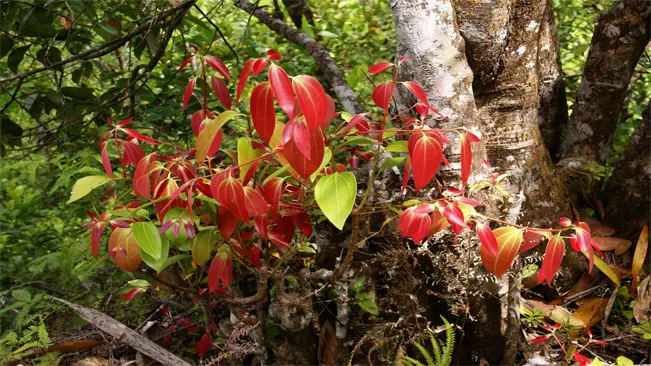
List on How To Grow Cinnamon Plant
- Understanding Cinnamon Plants
- Climate and Growing Conditions
- Planting Cinnamon
- Caring for Cinnamon Plants
- Harvesting Cinnamon
Understanding Cinnamon Plants
Cinnamon (Cinnamomum verum or Cinnamomum cassia) is a tropical evergreen tree native to Sri Lanka and Southeast Asia. It belongs to the Lauraceae family and can reach heights of up to 10 to 15 feet when grown outdoors, though it can be kept smaller through pruning. The inner bark of the tree is harvested and dried to produce the spice we commonly use in cooking.
Physical Characteristics
- Cinnamon trees can grow quite tall, reaching heights of 10 to 15 feet when cultivated outdoors in suitable conditions. However, they are also adaptable to being kept smaller through regular pruning, making them suitable for container gardening or indoor cultivation.
Leaves
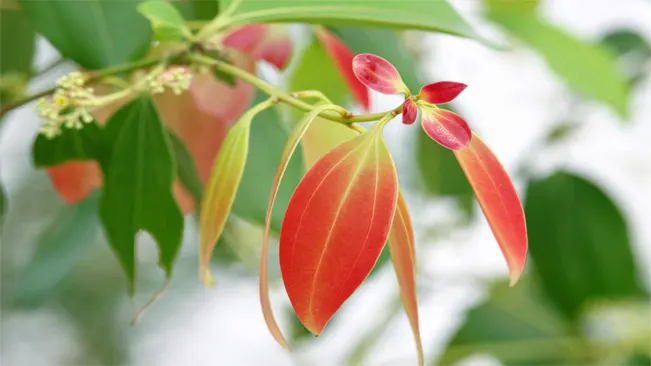
- The leaves of cinnamon plants are glossy, oval-shaped, and dark green in color. They are arranged alternately along the branches and can grow up to 7 inches in length. When crushed, the leaves emit a sweet, spicy aroma characteristic of cinnamon.
Bark
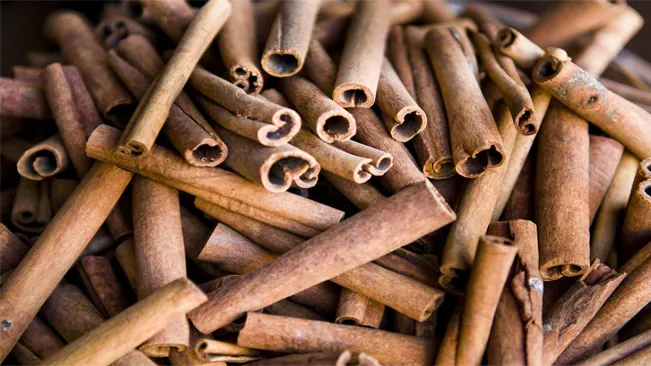
- The most prized part of the cinnamon plant is its inner bark, which is harvested for its culinary and medicinal uses. The bark is thin, papery, and reddish-brown in color. When dried, it curls into characteristic quills or sticks, which are ground into the fine powder we commonly use as a spice.
Flowers and Fruits
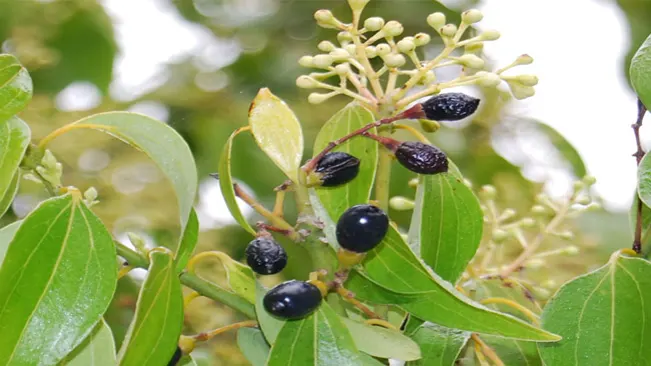
- Cinnamon trees produce small, inconspicuous flowers that are pale yellow-green in color. These flowers give way to small, berry-like fruits that ripen to a dark purple color. While the fruits are not typically consumed, they contribute to the plant’s overall aesthetic appeal.
Climate and Growing Conditions
Cinnamon plants thrive in tropical climates with consistent warmth and humidity. If you’re in a region with mild winters, you can grow cinnamon outdoors. However, in colder climates, it’s best to cultivate it in a pot indoors or in a greenhouse. Cinnamon plants prefer well-drained, slightly acidic soil with a pH between 5.5 and 6.5. They also require ample sunlight, so choose a spot that receives at least 6 to 8 hours of sunlight daily.
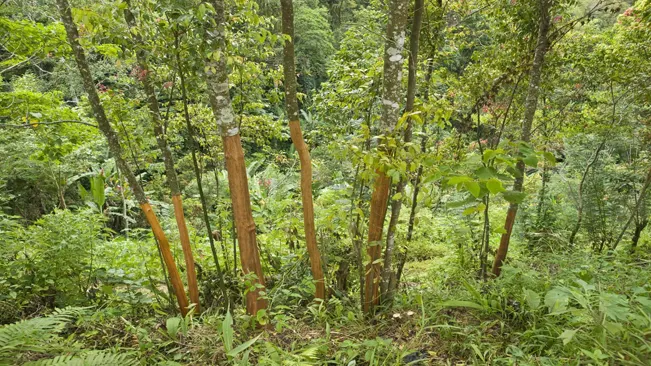
- Climate and Growing Conditions
Cinnamon plants thrive in tropical climates with consistent warmth and humidity. They are native to regions like Sri Lanka, Indonesia, and parts of Southeast Asia, where temperatures remain warm year-round. These plants are sensitive to cold temperatures and cannot tolerate frost, making them unsuitable for cultivation in regions with harsh winters.
In areas with mild winters, such as USDA hardiness zones 10-12, cinnamon plants can be grown outdoors directly in the ground. However, in colder climates, it’s best to cultivate cinnamon in pots that can be moved indoors during the colder months or grown in a greenhouse to provide the necessary warmth and protection. - Soil and pH
Cinnamon plants prefer well-drained soil that is slightly acidic, with a pH between 5.5 and 6.5. Sandy loam or loamy soil with good drainage is ideal for cinnamon cultivation. Avoid heavy clay soils that retain water, as they can lead to root rot and other problems. Adding organic matter such as compost or well-rotted manure to the soil can improve its texture and fertility, providing a conducive environment for cinnamon plants to thrive. - Sunlight
Cinnamon plants require ample sunlight to grow and produce healthy foliage. They prefer full sun to partial shade, so choose a planting location that receives at least 6 to 8 hours of sunlight daily. In areas with intense afternoon sun, providing some afternoon shade can help prevent leaf scorch and sunburn. Indoors, place cinnamon plants near a south-facing window where they can receive adequate sunlight throughout the day. - Humidity
Humidity is another crucial factor for cinnamon plants, as they originate from tropical regions with high humidity levels. While they can tolerate moderate humidity levels, providing a humid environment can promote better growth and overall health. You can increase humidity around cinnamon plants by misting them regularly with water or placing a humidity tray filled with water and pebbles near the plants. Alternatively, you can use a room humidifier to maintain optimal humidity levels, especially indoors during the drier winter months.
Planting Cinnamon
Selecting a Container
- When cultivating cinnamon in a pot, the choice of container plays a crucial role in its growth. Opt for a pot that provides ample space for root development. A container with a diameter of at least 12 inches is recommended to accommodate the plant’s root system adequately. Ensure the pot has drainage holes at the bottom to prevent water from accumulating and causing root rot.
Preparing the Soil
- Creating the right soil environment is essential for the successful growth of cinnamon plants. Begin by preparing a well-draining potting mix enriched with organic matter. A suitable blend can be achieved by combining equal parts of peat moss, perlite, and compost. Peat moss aids in moisture retention, perlite improves drainage, and compost enriches the soil with essential nutrients. Thoroughly mix these components to create a nutrient-rich growing medium.
Planting the Sapling
- Carefully transplant the cinnamon sapling into the prepared pot, ensuring that it is positioned at the same depth as it was growing in its nursery container. Gently loosen the roots if they appear compacted before planting to encourage healthy growth. Once the sapling is in place, backfill the pot with the prepared soil mix, ensuring the roots are adequately covered. Press the soil down gently around the base of the plant to secure it in place.
Caring for Cinnamon Plants
Watering
Proper watering is crucial for the health of your cinnamon plant. While cinnamon plants prefer consistently moist soil, they are susceptible to root rot if the soil becomes waterlogged.
- Consistent Moisture: Aim to keep the soil consistently moist, especially during the growing season (spring and summer). Water the plant thoroughly, allowing excess water to drain away.
- Avoid Waterlogging: Ensure that the pot or planting area has adequate drainage to prevent water from pooling around the roots. Waterlogged soil can lead to root rot and other fungal diseases.
- Monitor Soil Moisture: Check the moisture level of the soil regularly by inserting your finger into the top inch of soil. If it feels dry to the touch, it’s time to water. Avoid letting the soil dry out completely between watering sessions.
Fertilizing
Cinnamon plants benefit from regular feeding to support healthy growth and development. Use a balanced liquid fertilizer formulated for houseplants or tropical plants.
- Frequency: Feed your cinnamon plant every 4 to 6 weeks during the active growing season, which typically spans from spring through summer. Reduce fertilization frequency or stop altogether during the fall and winter months when growth slows down.
- Dilution: Dilute the liquid fertilizer according to the manufacturer’s instructions to avoid over-fertilizing, which can lead to nutrient imbalances or burn the plant’s roots.
- Application: Apply the fertilizer directly to the soil around the base of the plant, taking care not to let it come into contact with the leaves or stems. Water the plant after fertilizing to help distribute the nutrients evenly.
Pruning
Pruning is an essential aspect of cinnamon plant care, helping to maintain its shape, promote bushy growth, and remove any dead or diseased branches.
- Regular Maintenance: Prune your cinnamon plant regularly throughout the year to remove dead, damaged, or overgrown branches. Use clean, sharp pruning shears to make clean cuts and minimize stress on the plant.
- Shape and Size: Trim back any long or leggy branches to encourage a compact, bushy growth habit. You can also prune the plant to shape it according to your preferences, whether you prefer a more rounded form or a particular style.
- Disease Management: Promptly remove any branches or foliage showing signs of disease, such as discoloration, wilting, or unusual growth. Dispose of diseased plant material away from your cinnamon plant to prevent the spread of infection.
Pest and Disease Control
While cinnamon plants are relatively resilient, they can still be susceptible to common pests and diseases.
- Regular Inspection: Inspect your cinnamon plant regularly for signs of pests such as aphids, scale insects, spider mites, and mealybugs. Look for visible insects, sticky residue on the leaves (indicative of honeydew secretions), or distorted growth.
- Natural Remedies: For minor pest infestations, try using natural remedies such as insecticidal soap, neem oil, or a diluted solution of water and dish soap to suffocate and repel pests. Apply the treatment directly to affected areas, ensuring thorough coverage.
- Good Hygiene: Maintain good hygiene practices by keeping the area around your cinnamon plant clean and free of fallen leaves or debris, which can harbor pests and pathogens. Prune away any affected foliage and dispose of it properly to prevent the spread of disease.
- Air Circulation: Ensure adequate air circulation around your cinnamon plant by spacing it apart from other plants and avoiding overcrowding. Good air circulation helps prevent the development of fungal diseases such as powdery mildew and botrytis blight.
Harvesting Cinnamon
When your cinnamon plant reaches maturity, typically between 2 to 3 years old, it’s time to select branches for harvesting. Look for branches with a diameter of at least 1 inch as these will yield the most substantial bark.
Peeling the Bark
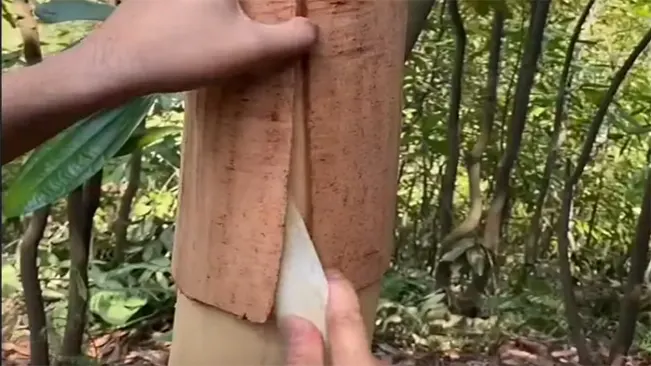
- Using a sharp knife or specialized tool, carefully strip away the outer bark from the selected branches. Make long, shallow cuts along the length of the branch, being cautious not to damage the inner layers. As you peel away the outer bark, the inner bark, which is the cinnamon layer, will be exposed. Take care to preserve the integrity of the inner bark to ensure the highest quality cinnamon.
Drying
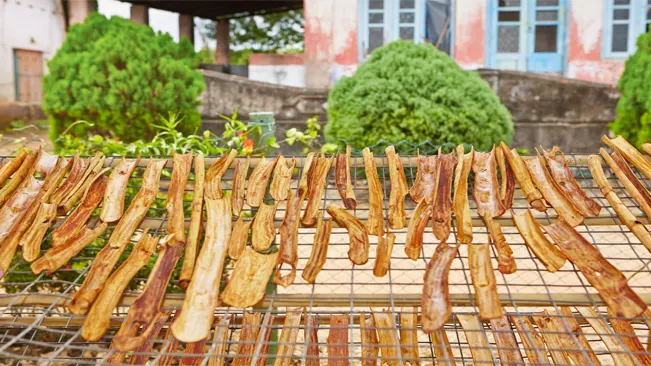
- Once the inner bark is exposed, lay the cinnamon bark strips in a single layer in a well-ventilated area. Avoid direct sunlight, as this can cause the bark to lose its flavor and aroma. Instead, choose a shaded spot with good airflow. Allow the cinnamon bark to dry completely, which may take several days to a week depending on the humidity levels in your area. During the drying process, the bark will naturally curl into the characteristic cinnamon sticks.
Storage
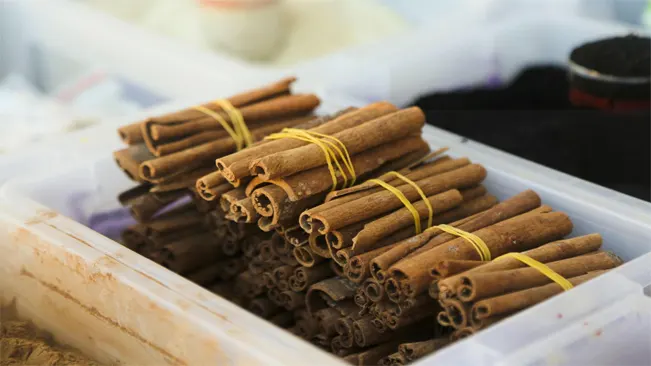
- Once dry, carefully gather the cinnamon sticks and store them in an airtight container to preserve their flavor and aroma. Choose a cool, dark location away from heat sources, as exposure to light and high temperatures can degrade the quality of the spice. Properly stored cinnamon sticks can retain their flavor for up to a year, allowing you to enjoy the fruits of your labor long after the harvest season.
Conclusion
Growing cinnamon plants at home allows you to enjoy the fresh flavor and aroma of this beloved spice while also adding a touch of tropical greenery to your indoor or outdoor space. By providing the right growing conditions and care, you can cultivate healthy cinnamon plants that will provide you with a bountiful harvest for years to come.
FAQs (Frequently Asked Questions)
- What kind of climate does a cinnamon plant require?
- Cinnamon plants thrive in tropical climates with consistent warmth and humidity. They prefer temperatures between 70°F to 85°F (21°C to 29°C) and high humidity levels.
- Cinnamon plants thrive in tropical climates with consistent warmth and humidity. They prefer temperatures between 70°F to 85°F (21°C to 29°C) and high humidity levels.
- Can I grow cinnamon indoors?
- Yes, you can grow cinnamon indoors, especially if you live in a region with colder winters. Ensure your cinnamon plant receives ample sunlight, preferably near a south-facing window, and maintain a humid environment.
- Yes, you can grow cinnamon indoors, especially if you live in a region with colder winters. Ensure your cinnamon plant receives ample sunlight, preferably near a south-facing window, and maintain a humid environment.
- How often should I water my cinnamon plant?
- Water your cinnamon plant regularly to keep the soil consistently moist but not waterlogged. Allow the top inch of soil to dry out between watering sessions, and adjust watering frequency based on environmental conditions.
- Water your cinnamon plant regularly to keep the soil consistently moist but not waterlogged. Allow the top inch of soil to dry out between watering sessions, and adjust watering frequency based on environmental conditions.
- What kind of soil is best for growing cinnamon?
- Cinnamon plants prefer well-draining, slightly acidic soil with a pH between 5.5 and 6.5. A mix of peat moss, perlite, and compost works well to provide the necessary nutrients and drainage
.
- Cinnamon plants prefer well-draining, slightly acidic soil with a pH between 5.5 and 6.5. A mix of peat moss, perlite, and compost works well to provide the necessary nutrients and drainage
- How tall does a cinnamon plant grow?
- In optimal conditions, cinnamon plants can grow up to 10 to 15 feet (3 to 4.5 meters) tall when grown outdoors. However, they can be pruned to maintain a smaller size, making them suitable for container gardening.
- In optimal conditions, cinnamon plants can grow up to 10 to 15 feet (3 to 4.5 meters) tall when grown outdoors. However, they can be pruned to maintain a smaller size, making them suitable for container gardening.
- When is the best time to fertilize cinnamon plants?
- Fertilize your cinnamon plant with a balanced liquid fertilizer every 4 to 6 weeks during the growing season, which typically spans from spring to summer. Reduce fertilization during fall and winter when the plant’s growth slows down.
- Fertilize your cinnamon plant with a balanced liquid fertilizer every 4 to 6 weeks during the growing season, which typically spans from spring to summer. Reduce fertilization during fall and winter when the plant’s growth slows down.
- How long does it take for a cinnamon plant to mature?
- Cinnamon plants typically take 2 to 3 years to mature enough for harvesting. During this time, they will develop a strong root system and establish healthy growth.
- Cinnamon plants typically take 2 to 3 years to mature enough for harvesting. During this time, they will develop a strong root system and establish healthy growth.
- What pests and diseases should I watch out for?
- Common pests that can affect cinnamon plants include aphids, scale insects, and spider mites. Ensure good air circulation around the plant to prevent fungal diseases such as powdery mildew and root rot.
- Common pests that can affect cinnamon plants include aphids, scale insects, and spider mites. Ensure good air circulation around the plant to prevent fungal diseases such as powdery mildew and root rot.
- Can I propagate cinnamon plants from cuttings?
- Yes, cinnamon plants can be propagated from semi-hardwood cuttings taken in late spring or early summer. Ensure the cuttings have at least one leaf node and remove any lower leaves before planting them in a well-draining rooting medium.
- Yes, cinnamon plants can be propagated from semi-hardwood cuttings taken in late spring or early summer. Ensure the cuttings have at least one leaf node and remove any lower leaves before planting them in a well-draining rooting medium.
- How do I harvest cinnamon from my plant?
- Cinnamon bark is harvested by carefully stripping away the outer bark from mature branches using a sharp knife. The inner bark, which is cinnamon, is then dried and curled into characteristic cinnamon sticks before storage and use.
For more expert gardening and advice, explore our guides, discover top recommendations in our best section, and delve into in-depth product reviews in our review section. Happy Gardening.

Kristine Moore
Forestry AuthorI'm Kristine Moore, a seasoned garden landscaping professional with over 30 years of experience. My extensive career has been dedicated to transforming outdoor spaces into stunning, sustainable landscapes. With a deep understanding of horticulture, design principles, and environmental stewardship, I have become a respected figure in the field, known for creating harmonious, visually appealing, and eco-friendly gardens. My commitment to excellence and continuous learning in landscaping trends and techniques has solidified my reputation as an expert in garden design and implementation.


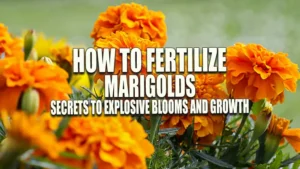




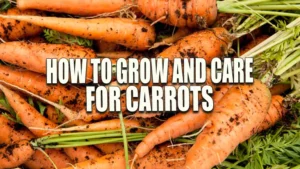
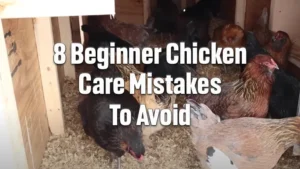




Leave your comment